

Aprendiendo Nutrición con el Chef — Boletín de educación nutricional para niños en preescolar — Lección 6 (Paquete de 25)
Revised $12
Nota del editor
Esta publicación fue creada para que usted imprima y distribuya de manera gratuita. Si va a duplicar o copiar esta publicación, por favor, complete el formulario de permiso que se encuentra al lado izquierdo de esta página. Si va a compartir o publicar, por favor utilice el enlace directo a esta página.

Aprendiendo Nutrición con el Chef — Boletín de educación nutricional para niños en tercer grado — Lección 2 (Paquete de 25)
Revised $12
Nota del editor
Esta publicación fue creada para que usted imprima y distribuya de manera gratuita. Si va a duplicar o copiar esta publicación, por favor, complete el formulario de permiso que se encuentra al lado izquierdo de esta página. Si va a compartir o publicar, por favor utilice el enlace directo a esta página.
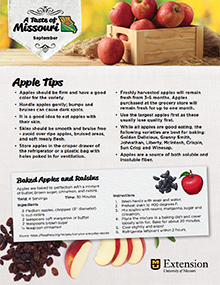
A Taste of Missouri — September — Apples
New $3.25
Easy-to-prepare recipes and tips for using apples are displayed in this eight-page flier. Additional seasonal recipes, ingredients, tips, and safety measures are also included.
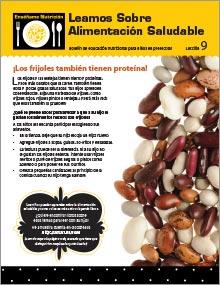
Aprendiendo Nutrición con el Chef — Boletín de educación nutricional para niños en preescolar — Lección 9 (Paquete de 25)
Revised $12
Nota del editor
Esta publicación fue creada para que usted imprima y distribuya de manera gratuita. Si va a duplicar o copiar esta publicación, por favor, complete el formulario de permiso que se encuentra al lado izquierdo de esta página. Si va a compartir o publicar, por favor utilice el enlace directo a esta página.

Aprendiendo Nutrición con el Chef — Boletín de educación nutricional para niños en tercer grado — Lección 5 (Paquete de 25)
Revised $12
Nota del editor
Esta publicación fue creada para que usted imprima y distribuya de manera gratuita. Si va a duplicar o copiar esta publicación, por favor, complete el formulario de permiso que se encuentra al lado izquierdo de esta página. Si va a compartir o publicar, por favor utilice el enlace directo a esta página.
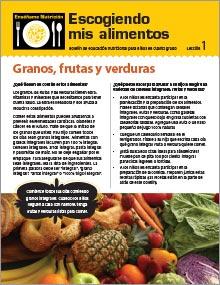
Aprendiendo Nutrición con el Chef — Boletín de educación nutricional para niños en cuarto grado — Lección 1 (Paquete de 25)
Revised $12
Nota del editor
Esta publicación fue creada para que usted imprima y distribuya de manera gratuita. Si va a duplicar o copiar esta publicación, por favor, complete el formulario de permiso que se encuentra al lado izquierdo de esta página. Si va a compartir o publicar, por favor utilice el enlace directo a esta página.
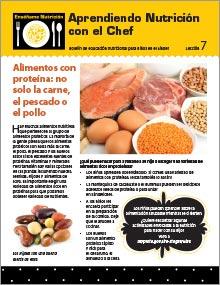
Aprendiendo Nutrición con el Chef — Boletín de educación nutricional para niños en el kínder — Lección 7 (Paquete de 25)
Revised $12
Nota del editor
Esta publicación fue creada para que usted imprima y distribuya de manera gratuita. Si va a duplicar o copiar esta publicación, por favor, complete el formulario de permiso que se encuentra al lado izquierdo de esta página. Si va a compartir o publicar, por favor utilice el enlace directo a esta página.

Aprendiendo Nutrición con el Chef — Boletín de educación nutricional para niños en cuarto grado — Lección 4 (Paquete de 25)
Revised $12
Nota del editor
Esta publicación fue creada para que usted imprima y distribuya de manera gratuita. Si va a duplicar o copiar esta publicación, por favor, complete el formulario de permiso que se encuentra al lado izquierdo de esta página. Si va a compartir o publicar, por favor utilice el enlace directo a esta página.

Aprendiendo Nutrición con el Chef — Boletín de educación nutricional para niños en cuarto grado — Lección 7 (Paquete de 25)
Revised $12
Nota del editor
Esta publicación fue creada para que usted imprima y distribuya de manera gratuita. Si va a duplicar o copiar esta publicación, por favor, complete el formulario de permiso que se encuentra al lado izquierdo de esta página. Si va a compartir o publicar, por favor utilice el enlace directo a esta página.
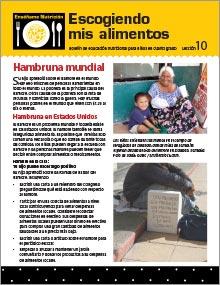
Aprendiendo Nutrición con el Chef — Boletín de educación nutricional para niños en cuarto grado — Lección 10 (Paquete de 25)
Revised $12
Nota del editor
Esta publicación fue creada para que usted imprima y distribuya de manera gratuita. Si va a duplicar o copiar esta publicación, por favor, complete el formulario de permiso que se encuentra al lado izquierdo de esta página. Si va a compartir o publicar, por favor utilice el enlace directo a esta página.

Preserve It Fresh, Preserve It Safe: 2023, No. 5 (September/October)
New
Learn about why the acidity of vinegar matters in home-preserved foods and why kimchi has become a trendy fermented food.
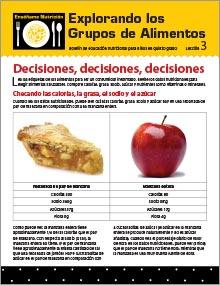
Aprendiendo Nutrición con el Chef — Boletín de educación nutricional para niños en quinto grado — Lección 3 (Paquete de 25)
Revised $12
Nota del editor
Esta publicación fue creada para que usted imprima y distribuya de manera gratuita. Si va a duplicar o copiar esta publicación, por favor, complete el formulario de permiso que se encuentra al lado izquierdo de esta página. Si va a compartir o publicar, por favor utilice el enlace directo a esta página.
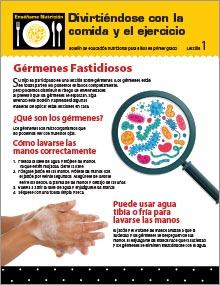
Aprendiendo Nutrición con el Chef — Boletín de educación nutricional para niños en primer grado — Lección 1 (Paquete de 25)
Revised $12
Este boletín se corresponde con la Lección 1 del currículo Aprendiendo Nutrición con el Chef. Aprenda la importancia del lavado de manos para evitar enfermedades.
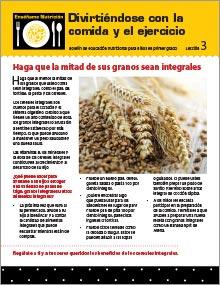
Aprendiendo Nutrición con el Chef — Boletín de educación nutricional para niños en primer grado — Lección 3 (Paquete de 25)
Revised $12
Nota del editor
Esta publicación fue creada para que usted imprima y distribuya de manera gratuita. Si va a duplicar o copiar esta publicación, por favor, complete el formulario de permiso que se encuentra al lado izquierdo de esta página. Si va a compartir o publicar, por favor utilice el enlace directo a esta página.

Aprendiendo Nutrición con el Chef — Boletín de educación nutricional para niños en quinto grado — Lección 6 (Paquete de 25)
Revised $12
Nota del editor
Esta publicación fue creada para que usted imprima y distribuya de manera gratuita. Si va a duplicar o copiar esta publicación, por favor, complete el formulario de permiso que se encuentra al lado izquierdo de esta página. Si va a compartir o publicar, por favor utilice el enlace directo a esta página.

Aprendiendo Nutrición con el Chef — Boletín de educación nutricional para niños en primer grado — Lección 6 (Paquete de 25)
Revised $12
Nota del editor
Esta publicación fue creada para que usted imprima y distribuya de manera gratuita. Si va a duplicar o copiar esta publicación, por favor, complete el formulario de permiso que se encuentra al lado izquierdo de esta página. Si va a compartir o publicar, por favor utilice el enlace directo a esta página.
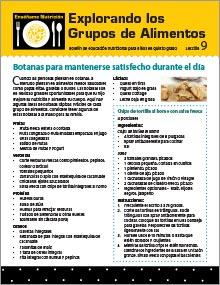
Aprendiendo Nutrición con el Chef — Boletín de educación nutricional para niños en quinto grado — Lección 9 (Paquete de 25)
Revised $12
Nota del editor
Esta publicación fue creada para que usted imprima y distribuya de manera gratuita. Si va a duplicar o copiar esta publicación, por favor, complete el formulario de permiso que se encuentra al lado izquierdo de esta página. Si va a compartir o publicar, por favor utilice el enlace directo a esta página.

Aprendiendo Nutrición con el Chef — Boletín de educación nutricional para niños en segundo grado — Lección 1 (Paquete de 25)
Revised $12
Nota del editor
Esta publicación fue creada para que usted imprima y distribuya de manera gratuita. Si va a duplicar o copiar esta publicación, por favor, complete el formulario de permiso que se encuentra al lado izquierdo de esta página. Si va a compartir o publicar, por favor utilice el enlace directo a esta página.
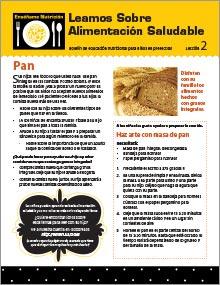
Aprendiendo Nutrición con el Chef — Boletín de educación nutricional para niños en preescolar — Lección 2 (Paquete de 25)
Revised $12
Nota del editor
Esta publicación fue creada para que usted imprima y distribuya de manera gratuita. Si va a duplicar o copiar esta publicación, por favor, complete el formulario de permiso que se encuentra al lado izquierdo de esta página. Si va a compartir o publicar, por favor utilice el enlace directo a esta página.

Aprendiendo Nutrición con el Chef — Boletín de educación nutricional para niños en segundo grado — Lección 4 (Paquete de 25)
Revised $12
Nota del editor
Esta publicación fue creada para que usted imprima y distribuya de manera gratuita. Si va a duplicar o copiar esta publicación, por favor, complete el formulario de permiso que se encuentra al lado izquierdo de esta página. Si va a compartir o publicar, por favor utilice el enlace directo a esta página.
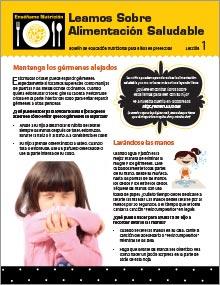
Aprendiendo Nutrición con el Chef — Boletín de educación nutricional para niños en preescolar — Lección 1 (Paquete de 25)
Revised $12
Nota del editor
Esta publicación fue creada para que usted imprima y distribuya de manera gratuita. Si va a duplicar o copiar esta publicación, por favor, complete el formulario de permiso que se encuentra al lado izquierdo de esta página. Si va a compartir o publicar, por favor utilice el enlace directo a esta página.
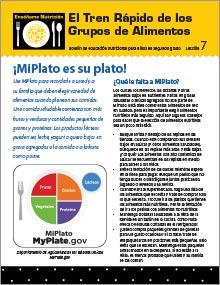
Aprendiendo Nutrición con el Chef — Boletín de educación nutricional para niños en segundo grado — Lección 7 (Paquete de 25)
Revised $12
Nota del editor
Esta publicación fue creada para que usted imprima y distribuya de manera gratuita. Si va a duplicar o copiar esta publicación, por favor, complete el formulario de permiso que se encuentra al lado izquierdo de esta página. Si va a compartir o publicar, por favor utilice el enlace directo a esta página.

Aprendiendo Nutrición con el Chef — Boletín de educación nutricional para niños en preescolar — Lección 7 (Paquete de 25)
Revised $12
Nota del editor
Esta publicación fue creada para que usted imprima y distribuya de manera gratuita. Si va a duplicar o copiar esta publicación, por favor, complete el formulario de permiso que se encuentra al lado izquierdo de esta página. Si va a compartir o publicar, por favor utilice el enlace directo a esta página.

Aprendiendo Nutrición con el Chef — Boletín de educación nutricional para niños en tercer grado — Lección 3 (Paquete de 25)
Revised $12
Nota del editor
Esta publicación fue creada para que usted imprima y distribuya de manera gratuita. Si va a duplicar o copiar esta publicación, por favor, complete el formulario de permiso que se encuentra al lado izquierdo de esta página. Si va a compartir o publicar, por favor utilice el enlace directo a esta página.
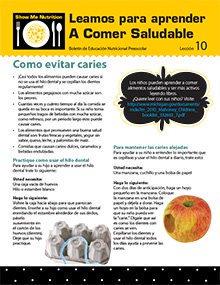
Aprendiendo Nutrición con el Chef — Boletín de educación nutricional para niños en preescolar — Lección 10 (Paquete de 25)
Revised $12
Nota del editor
Esta publicación fue creada para que usted imprima y distribuya de manera gratuita. Si va a duplicar o copiar esta publicación, por favor, complete el formulario de permiso que se encuentra al lado izquierdo de esta página. Si va a compartir o publicar, por favor utilice el enlace directo a esta página.